In 1956, IBM introduced a product that marked the beginning of the computer industry. And the name of this device is HDD.
In that configuration, the device had 50 plates 24 inches in diameter rotating at a speed of 1200 rpm, weighed about a ton and was able to record 5 MB of data.
However, it was a huge breakthrough at that time compared to punch cards or memory drums that were widely used then and precisely with the advent of IBM 350 in 1956 and connect the beginning of HDD history which will lead us to what we know as the hard drive now.
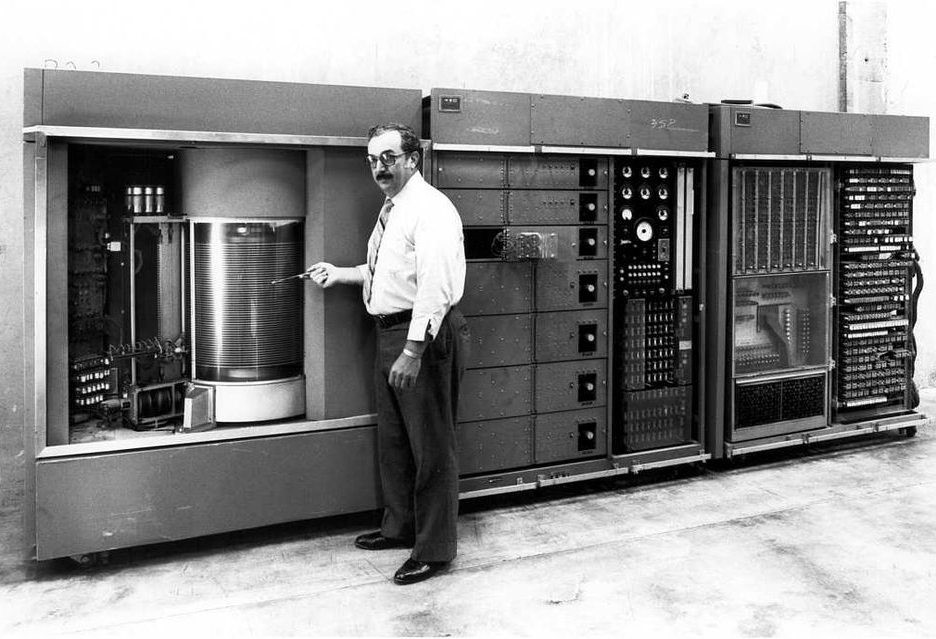
IBM 350 (1956)
Over the next 5 years, the company has released more than 1,000 IBM 305 RAMAC computers with this storage system inside. And despite the fact that more than 60 years have passed, modern hard drives continue to work on the same principle as their distant ancestor IBM 350.
The success of this model gave impetus to the development of technology and in 1961 the company released a new generation of hard drives IBM 1301 which were able to store 28 MB of data on 25 disks. Each disk had its own read / write head and this reduced the data access time from 600 to 180 ms. Four years later, in 1965, the IBM 2310 storage module was created, using replacement cartridges with a capacity of 1 MB.
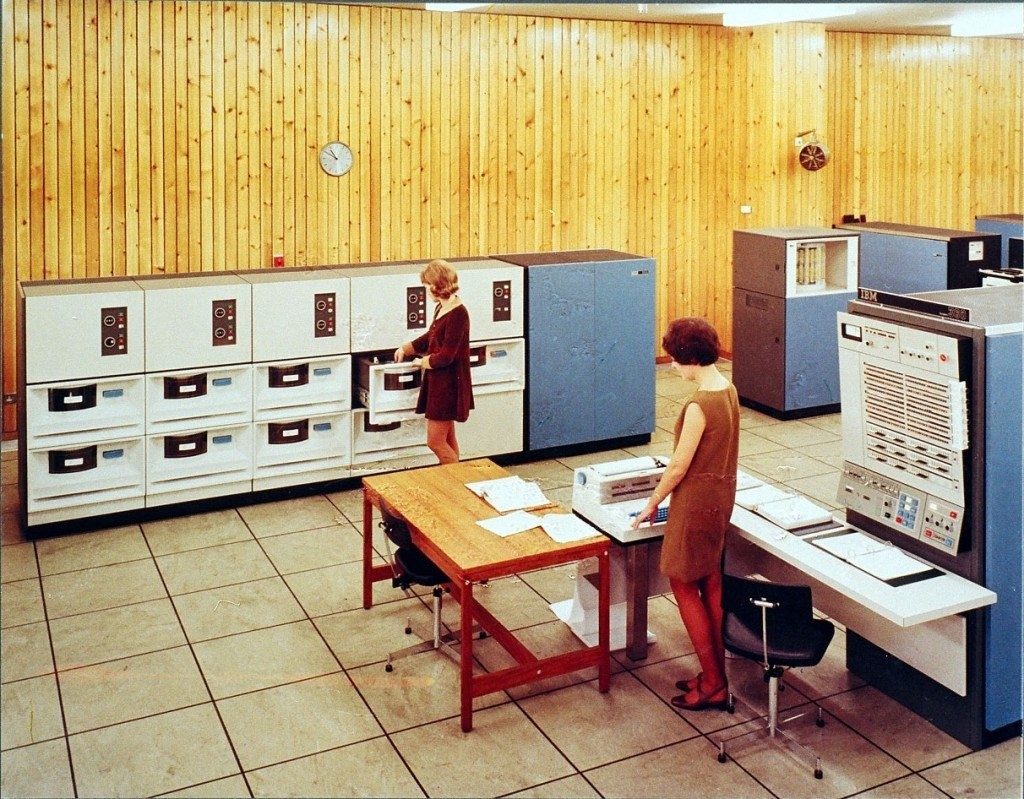
IBM 2310 (1965)
In 1970, the company released a model with a rotary mechanism and error correction – IBM 3300, the system consisted of two modules with removable media, each consisting of 11 disks of 14 “and had a capacity of 100 MB, and since 1974 and even more – 200 MB.
Such modules could be combined with each other and already on the basis of complex combinations to obtain capacities of gigabyte sizes. However, the cost (each module cost about 400k dollars) and the size of such arrays was still a serious obstacle to widespread distribution.
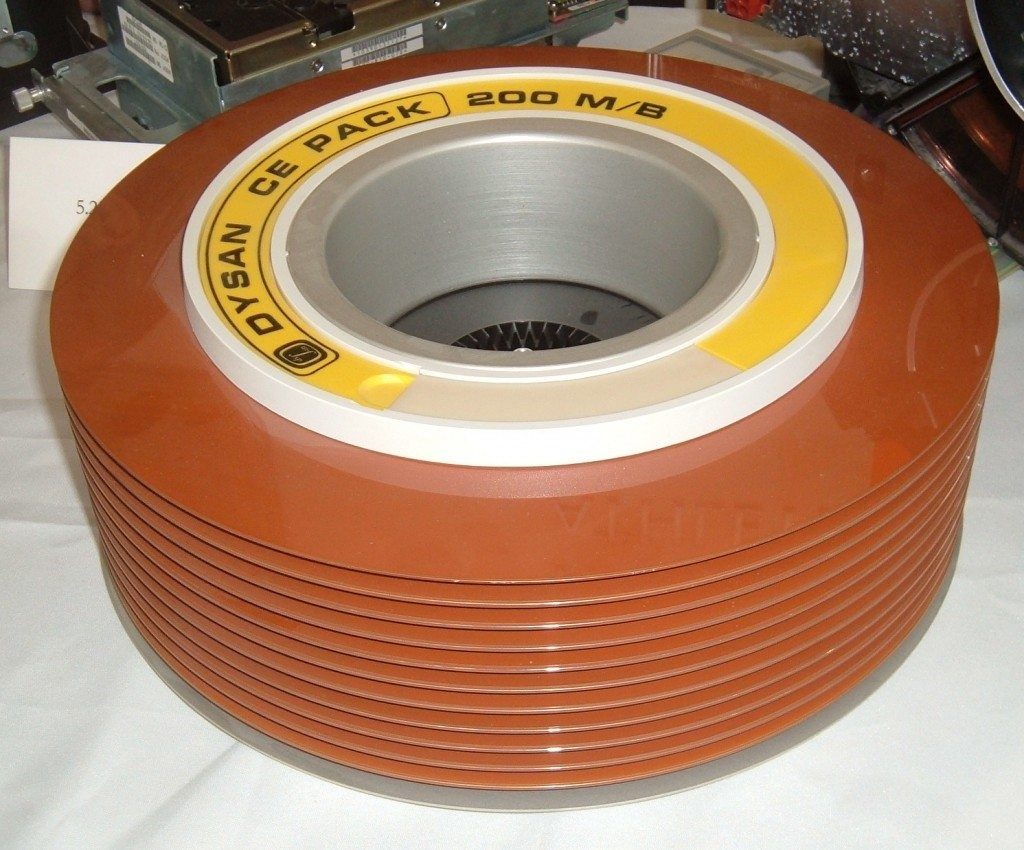
IBM 3300 (1970)
In 1976, Dataram introduced its solution in the form of a drive Bulk Core (which can now be called the ancestor of modern Solid State Drive – SSD). It was a very revolutionary and interesting solution that did not contain mechanical elements in which the so-called ferrite memory was used. Data access time in such a drive was a record 2 ms, but because of the cost, such a decision was completely uncompetitive (if you translate the price for the current conditions, then 1 TB of space would cost about 1.5 billion dollars)

BULK CORE (1976) Photo from http://www.dataram.com/blog/
In 1980, there was a real revolution – the company Shugart Technology introduced its disk in the new at that time form factor 5.25 “- ST-506. The disk had the same volume as IBM 350 in the distant 1956 (only 5 MB), but it was very “miniature” and weighed just 3.2 kg, which made it possible to use it in personal computers. The product of the company Shugart Technology has achieved market success, and the company itself today is known as Seagate.

ST-506 (1980)
The next jump in technology was the transition in 1983 to the 3.5 “form factor that the Scottish company released with the release of the Rodime RO352 drive, the device was only 10 MB in size, but this form factor has been used all over the world to this day as a standard for hard disks.
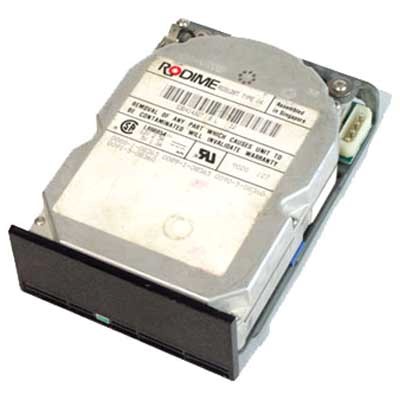
RODIME RO352 (1983)
The 80s of the last century was a period of miniaturization and standardization in the hard disk market – SCSI and IDE interfaces appeared; in 1988 there was the first hard disk in 2.5 “form factor from the company PrairieTek with a capacity of 20 MB, which later became the standard size for mass use in laptops, and in 2006 and the market for hard drives with SATA interface; At the same time, the Japanese Toshiba group developed a memory technology for semiconductor NAND flash.

SCSI interface (1980s)
The beginning of the 90’s was marked by the acceleration of the development of technology and achieved significant progress both in the volume of hard drives and in their cost thanks to the boom on personal computers. The first in 1991, the Gigabyte model brought to the market IBM (model 0663 Corsair 3.5 “8 discs), and a year later in 1992, Seagate introduced a disk capacity of 2.1 GB and a rotation speed of 7200 rpm.
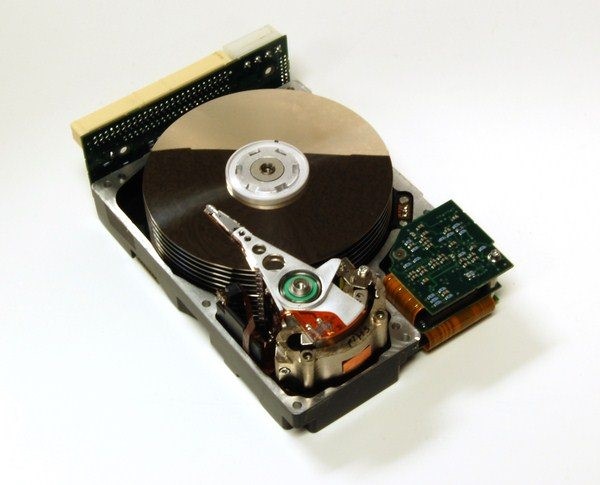
SEAGATE 2.1 Gb (1992)
Already in 1995, the Israeli company M-Systems developed and introduced the first FFD (Fast Flash Disk) in a standard 3.5 “form factor, similar to conventional hard drives, but had no mechanical elements and was based on NAND technology. This gave him a very important advantage in speed of access to information and was considered very solid and reliable in comparison with rotating hard drives. Such a decision was very expensive, but it was accepted by military and aviation, where the drives began to be used for flight recorders – the so-called black boxes.
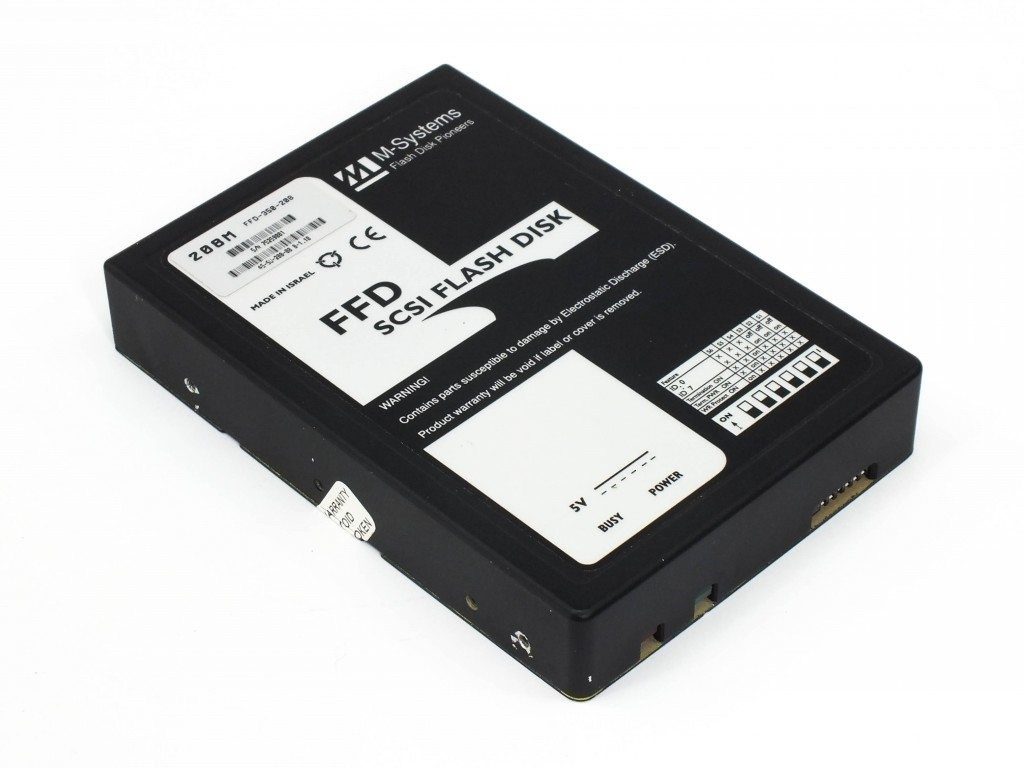
FFD SCSi FLASH DISK (1995)
In 1996, Seagate created the first hard drive from the Cheetah family, whose rotation speed became a record for that time and amounted to 10,000 rpm, and in the Cheetah X15 models since 2000, this speed has grown to 15,000 rpm. These were the fastest hard disks with IDE interface, users rated their speed and efficiency but did not approve because of the high level of generated noise.
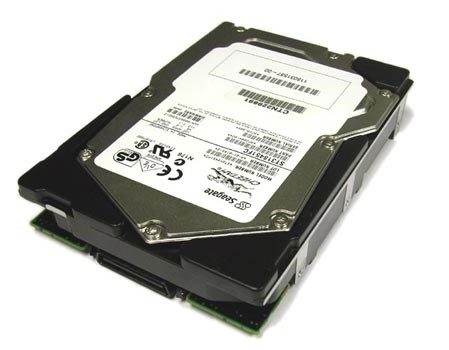
SEAGATE CHEETAH
The 21st century for Hard disks starts in 2002 when a new universal SATA interface appeared, which made it possible to connect disks to an array of RAID0, which allowed to get a significant speed increase and became the standard. SATA standard began to develop rapidly and in 2004 there was a second generation (SATA II 3 Gb / s), and five years later the third (SATA III 6 Gb / s).
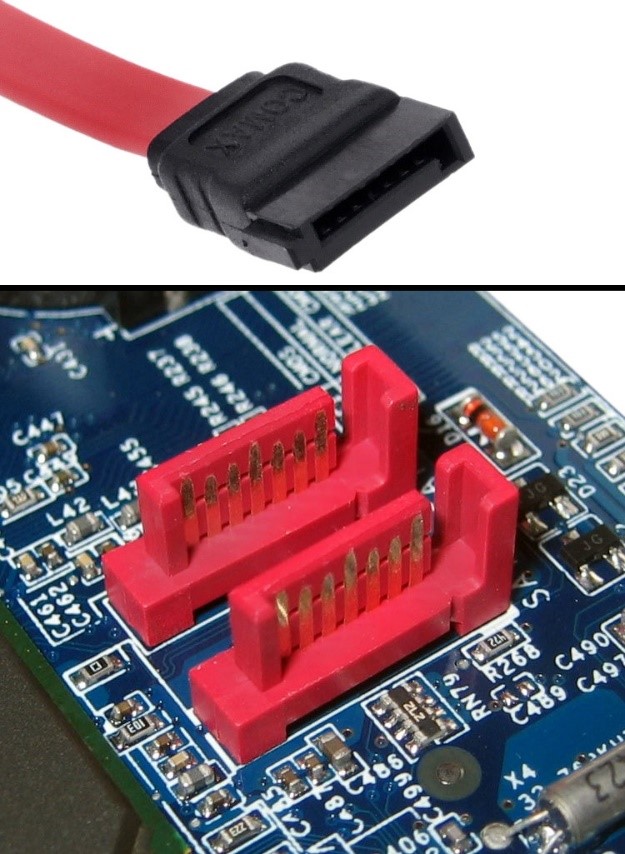
SATA (from Wikipedia)
In 2006, a significant reduction in the cost of flash memory NAND began and conventional hard drives got serious competition in the form of the first SSD.
The pioneers of the new technology were first Samsung and SanDisk, and in 2010 they joined the company Plextor.

Modern SSD
For the first time, the capacity of 1 TB hard drives was achieved in 2007 by Hitachi. Just imagine that to get the same capacity in 1956 it was necessary to connect about 200 000 IBM 350 modules into a single storage, and if we recall that each of them weighed about one ton, then their total mass corresponds to the mass of two nuclear aircraft carriers or one supertanker, today’s hard drives are capable of placing more than 12 TB of data on a 3.5-inch drive, and some manufacturers are talking about 100 TB hard drives in the next five to seven years of development.
Modern flash drives do not assume such storage capacities, but has another, equally important, component – speed of reading and writing information and today more and more ordinary users prefer faster SSDs to ordinary old HDDs, storing their terabytes of data on external hard drives or in cloud storages, and reasonable prices contribute to the spread and development of a new technology, about which someone, perhaps, in half a century will write such a same article.
Related materials:

Views All Time
1

Views Today
1
The following two tabs change content below.
Filed under:
Hardware, Success Story by Vladimir Yamkovoy